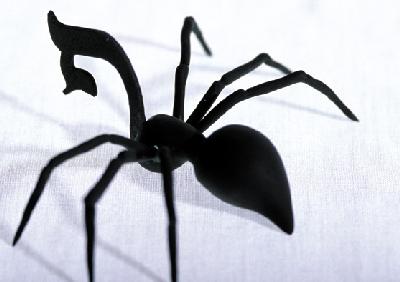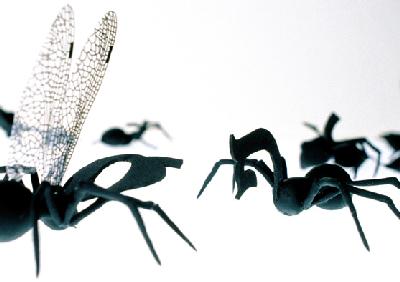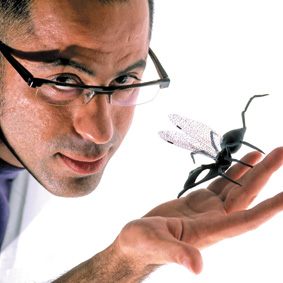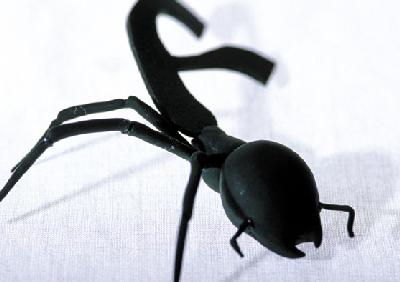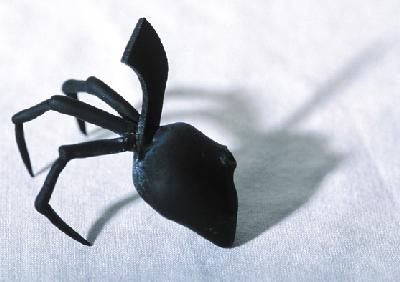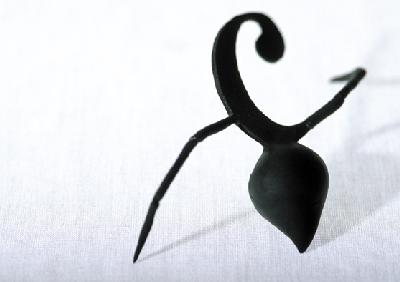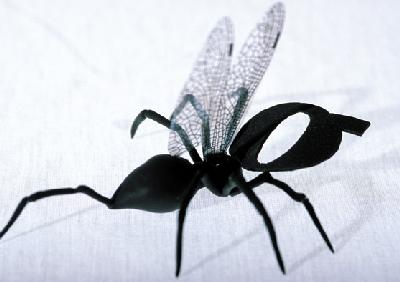oded ezer @ pingmag
ein etwas ausführlicheres interview über/mit dem israelischen gestalter oded ezer, der schon immer gerne die dritte dimension in die arbeit mit schrift gebracht hat.
zum interview
anbei noch ein wenig "redaktioneller abfall", der nicht mehr platz hatte...
'Biotypography' is the name I called the idea of a typography based on biology. As a paraphrase on the biotechnology definition, I can say that Biotypography is any typographical application that uses biological systems, living organisms, or derivatives thereof, to create or modify typographical phenomena.
The Biotypography project deals with manipulated Hebrew and Latin “typo creatures”. The main idea of the project was to create some sort of new transgenic creature, half insect, half letter. I have treated myself as a typographic scientist, that can produce, using biotechnological methods, these creatures. These new creatures are cloned ants, that typographic information has been implanted into their DNA.
These small typo creatures are made of black polymer clay ('Fimo'), black sponge and plastic. The initial sketches were ideas only but they changed and developed when they became real. I hoped to create live, almost cinematic situations where these typo creatures act. The most difficult thing while working on the project was the "balance" issue - Where to draw the line between the insect and the letter, how much recognizable should be the ant, and how much readable should be the letter? It took me some time to understand I don't really need the whole ant to make my point... and that the letter don't have to be
necessarily complete.
The most interesting thing was the relationships that where created between the typo creatures, when I put them together. In those situations that more than one typo creature were present, a most surprising, kind of documentarian situations, became almost real.
My motivation to create the Biotypography project, as in all my other typo art projects, was to challenge the borders of typographic conventions. I see myself obligated to find out and question the borders of typographic design as they are in Israel and in other countries and to suggest alternative solutions.
When working on the Biotypography project, I called myself ‘Typo artist’ and the medium I deal with is ‘Typo art’. This differ from ‘Typographer’ or ‘Type designer’ in the sense that I see this new field not as traditional typography (which will always want to deliver a message) or art (which deals with cultural aspects of the society)... I'm trying to define a language for a field I have just discovered.
Some of the questions I often ask myself while creating are: How does typography “behaves” in different situations? What do letters “do” when they are happy? How do they “look” when they are shy? How will a letter “act” when it is slapped, Kissed..? How will typographic design look in 10, 20, 50 or 100 years from now? What are the borders of readability on the one hand, and typographic expressiveness on the other hand? How can one use the tension between literal meaning and visual meaning in typographic work?
The idea is always to play while experimenting, to experiment while playing. The inspiration for my work comes from variety of contemporary fields, such as architecture, music, science and philosophy of our time. As an Israeli, I am, of course influenced by the cultural, national and political environment of my country. I see myself obligated to find out and question the borders of typographic design as they are in Israel and in other countries and to suggest alternative solutions.
Usually, my work is composed of commercial, typeface and experimental design. As a commercial designer I serve the needs of my clients; as a typeface designer, I am a sort of a meditator ; creating the typo artistic images is, for me, running away from the banal, predictable demands of the market, as if playing seriously a game like a six year old boy. In this last category, the silliest, most absurd, politically incorrect and shameless the results are, the more successful I feel.
I see myself as someone who uses his abilities to change and reshape the visual appearance of our environment in a way that will reflect the reality instead of hiding it. I see this not only a visual or professional act, but also a political one.
Best regards,
Oded Ezer
